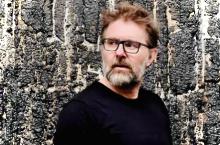City
伦敦
Specialty
Fashion designer, painter
Introduction
Workers for Freedom was a British fashion label that was launched in 1985 by Graham Fraser and Richard Nott. The brand was awarded Designer of the Year in 1989 at the British Fashion Awards. The brand look was described by the LA Timesas: "rich-hippie intellectual clothes". The Glasgow Herald, on the other hand, summarised it as: "a stylishness based on subtlety and fine construction which stands remote from fashion's general glitzkrieg and the obstructive shoulder pad". Workers for Freedom's design signatures included flowing shapes and ethnic-inspired details. It was particularly known for appliqué(widely copied on the high street) and intricate tie fastenings on garments such as shirts. Initially, its range was aimed at men but it soon expanded to womenswear.Some of its strongest early sales were with buyers from the United States, Italy and Japan – it had over 30 overseas clients by 1987. In the wake of its British Designer of the Year award, The Guardian noted that the label had: "built a reputation for wearable, beautifully made clothes always incorporating something surprising".
Experience
In 1990, Fraser and Nott signed a marketing agreement with Marco Rivetti's Gruppo Finanziario Tessile (GFT), the Italian company that had promoted names such as Armani, Montana, Ungaro and Valentino to international audiences during the 1970s. Under the terms of the deal, Workers for Freedom would be promoted across North America by GFT.It was also reported that Workers for Freedom had produced another 10 tiger-print silk shirts for Paul McCartney's world tour (to add to the 40 or 50 in his collection) and it had some copyright cases to pursue, with The Timesnoting that: "The pirating of Worker's [sic] stylish appliquė shirts has become an industry sport". By this stage, the company's clients included Diana Ross, Duran Duran and Vanessa Redgrave. Doris Saatchi, it was reported, ordered their silk robes in multiples. Fraser and Nott ended their Designer of the Year reign with a fashion show at Dayton Hudson in Minneapolis, where they showed alongside Yohji Yamamoto, Jean-Paul Gaultier and Geoffrey Beene. Fashion editor Liz Smith said the brand's signatures such as embroidery and appliqué were what attracted American store buyers, adding: "Here are two designers who ignore the trend towards high hemlines and go on doing their own thing".
In 1991, it was reported that continued financial pressure – worldwide recession, poor exchange rates and the Gulf War – had cut the budget of many high-spending foreign buyers who traditionally headed for London Fashion Week and Workers for Freedom, Jasper Conran and Bruce Oldfield were among those who chose not to stage a traditional catwalk show that spring – the official line to the press being that this was a curb on "unnecessary hype", rather than an economy. In 1994, Fraser and Nott took a break from the business, returning to designing two years later after securing a new backer. In 1998, Fraser and Nott sold Workers for Freedom, taking on the tenancy of the National Trust property Stoneacre in Kent. Fraser had begun a garden design course and Nott was focusing on his painting.




1000 Person
- 1
